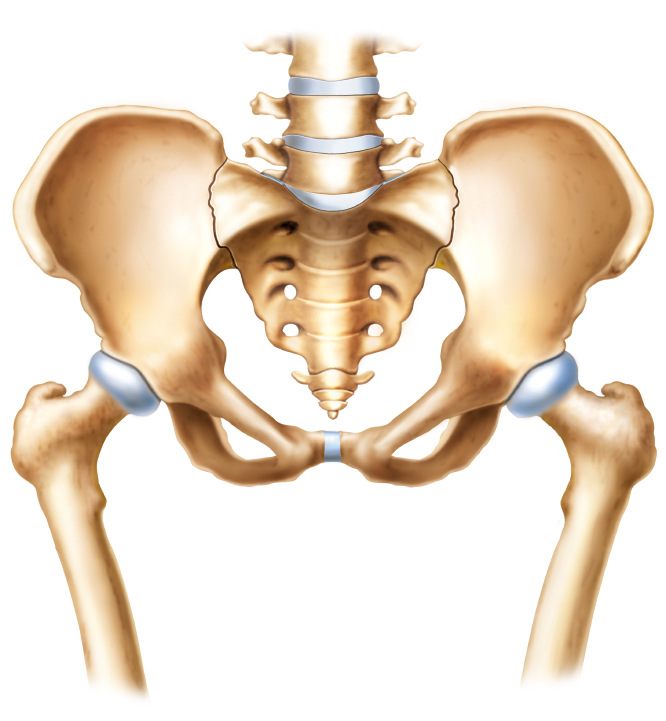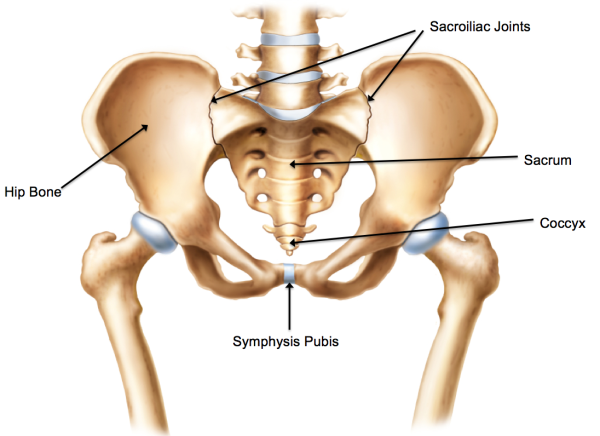Pelvic discomfort affects approximately one in five pregnant women. You will typically experience it at the front or back of the pelvis, hips, legs and groin.
The pelvis is made up of 4 bones: two hip bones, the Sacrum and the Coccyx. These bones resemble a basin shape at the base of the spine and help support our legs. The sides of the pelvis are the hip bones and the back is the sacrum and coccyx. These bones are tightly held together by cartilage and ligaments and the four bones join at the Symphysis Pubis, the two Sacroiliac Joints and the Sacrococcygeal Joints.
What causes Pelvic Discomfort?
Pelvic discomfort is usually caused by a combination of factors, including:
- Pelvic joints moving unevenly
- Changes to muscles during pregnancy, making joints less stable
- Hormones in pregnancy, particularly relaxin (which relaxes ligaments in the pelvis to allow for softening and widening, in preparation for labour and birth).
- The position of the baby as pregnancy progresses
- A baby’s weight (adds pressure to the pelvis, particularly in the third trimester)
- A previous injury to the pelvis
- Increased BMI (Body Mass Index)
Symptoms of Pelvic Discomfort
Pelvic pain varies from mild to severe, and will vary individually. You may experience symptoms anytime during pregnancy. They may occur suddenly or gradually.
Symptoms include:
- Pain in the front pubic region, hips, lower back, thighs, buttocks, groin or knees
- Grinding or clicking in the pelvic region with movement
Pain can be increased with uneven or unbalanced movement, such as rolling over in bed, walking up or down stairs, getting in and out of a car and uneven weight distribution when standing.
Treatment Options
Referral to a physiotherapist who can assess your pelvis and assist with treatment options is recommended. Alleviating pain and treatment options may include:
- An exercise regime
- Pelvic floor exercises and pelvic tilt exercises
- Good posture awareness
- Advice on what movements to avoid
- Manual/massage therapy
- Hydrotherapy
- Acupuncture
- A pelvic support belt
- Keeping active
- Avoiding strenuous activity
- Avoiding heavy lifting
- Sitting down to get dressed can also help to avoid unbalanced movements.
There is no evidence to suggest that a Caesarian Section is necessary with pelvic discomfort in pregnancy. Most women will proceed with a normal vaginal delivery. In most cases, pelvic pain will improve in the postpartum period, however; approximately one in ten women will require ongoing therapy for symptoms post-delivery. If you have had pelvic pain in pregnancy, it may reoccur in subsequent pregnancies. Maintaining strength around the pelvic region and keeping up general fitness is advised for future pregnancies.



